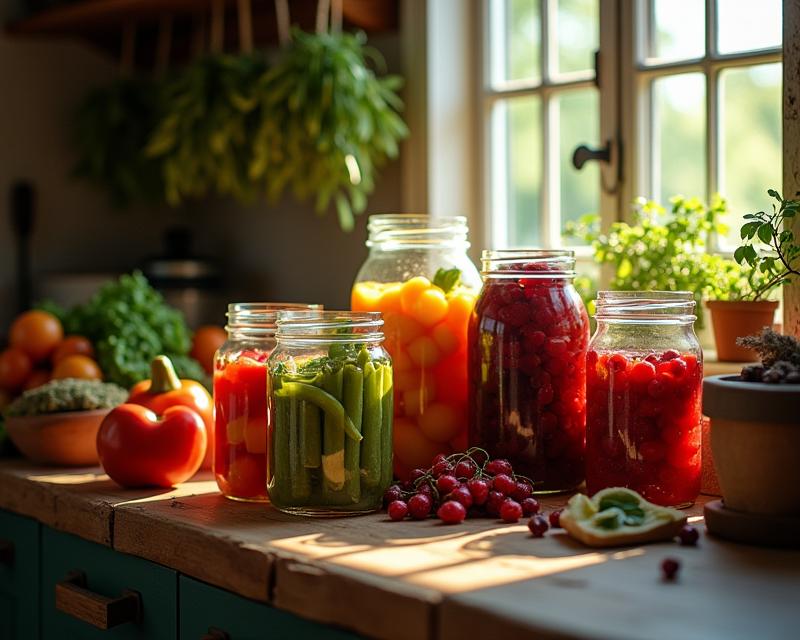Preserving Your Bounty: Drying, Canning & Freezing
Publish in Crops el 28/06/2025 22:22
Preserving Your Bounty: Drying, Canning & Freezing
The harvest season is a time of abundance! You've worked hard tending to your crops, and now you're reaping the rewards. But what do you do with all that fresh produce? Preserving your harvest allows you to enjoy the fruits (and vegetables!) of your labor long after the season is over. There are several methods for preserving food, each with its own advantages and disadvantages. Let's explore drying, canning, and freezing – the most popular techniques for keeping your harvest fresh and delicious.

Drying: A Simple & Traditional Method
Drying is one of the oldest and simplest methods of food preservation. It works by removing moisture from the food, inhibiting the growth of bacteria, yeast, and mold. Fruits like apples, apricots, and tomatoes are excellent candidates for drying. Vegetables like herbs, mushrooms, and peppers can also be dried. You can dry food using a dehydrator, an oven on a very low setting, or even in the sun (though sun-drying requires careful monitoring to prevent spoilage). Dried foods are lightweight, shelf-stable, and perfect for snacking or adding to recipes. Proper storage in airtight containers is key to maintaining quality.
Canning: Long-Term Storage & Delicious Results
Canning involves sealing food in airtight jars and then heating them to a temperature that destroys harmful microorganisms. This method allows for long-term storage at room temperature. Canning is ideal for fruits, vegetables, jams, jellies, and sauces. There are two main types of canning: water bath canning (for high-acid foods like fruits, pickles, and jams) and pressure canning (for low-acid foods like vegetables, meats, and soups). Pressure canning is essential for preventing botulism, a serious foodborne illness. Always follow tested and approved canning recipes to ensure safety. Proper headspace and sealing are crucial for a successful and safe canning process.
Freezing: Quick & Convenient Preservation
Freezing is a quick and easy way to preserve your harvest, locking in the flavor and nutrients of fresh produce. Many fruits and vegetables freeze well, although some may experience changes in texture. Blanching vegetables before freezing helps to preserve their color, flavor, and nutrients. Fruits can be frozen whole, sliced, or pureed. Use freezer-safe bags or containers to prevent freezer burn. Label and date your frozen items for easy identification and to ensure you use them within a reasonable timeframe (typically 8-12 months for optimal quality). Freezing is a great option for preserving berries, corn, peas, and many other vegetables.
No matter which preservation method you choose, preserving your harvest is a rewarding way to enjoy the bounty of your garden throughout the year. Experiment with different techniques and find what works best for you and your family. Happy preserving!





